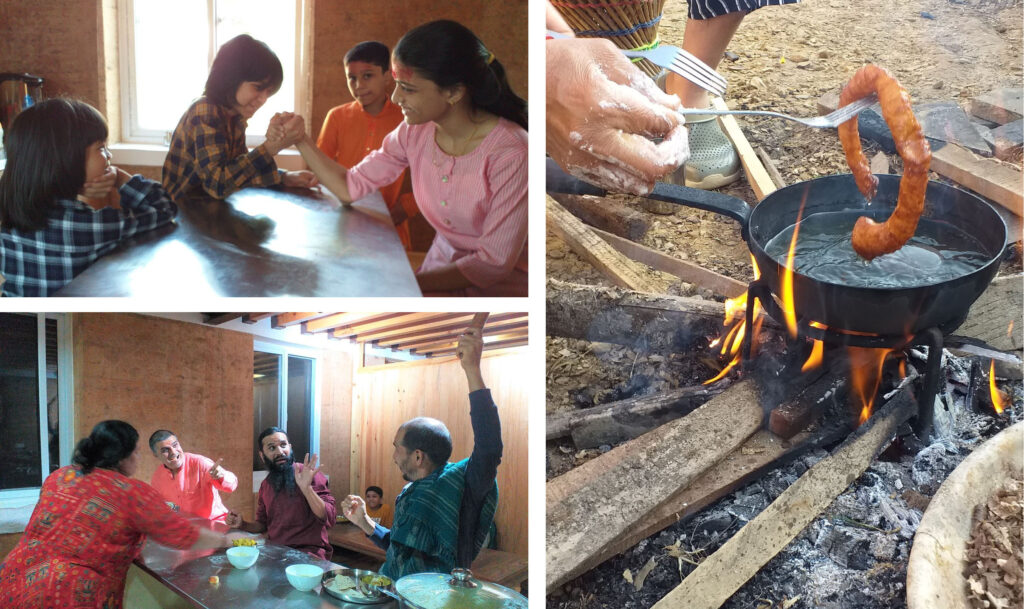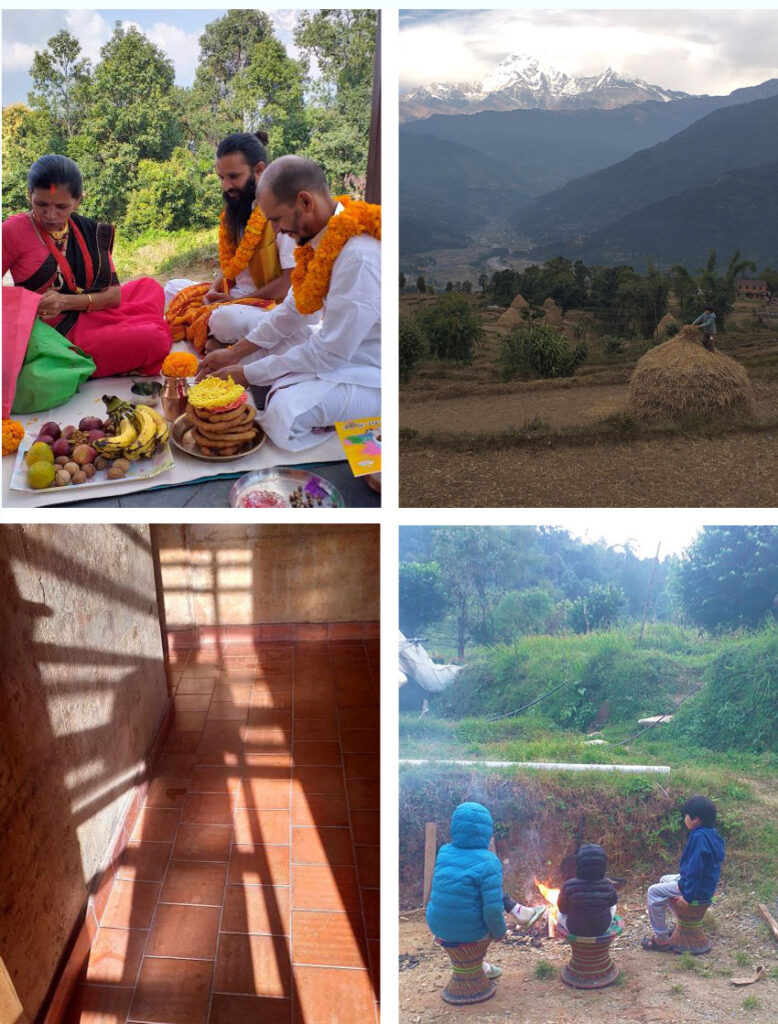
It came with a ruffle and a tussle and a year late. We finally found ourselves shifting earth dust of our new home during Navaratri 2021. The final touch came with helping hands, jitterbugs and blessings from extended family across the Indian border and other Nepali towns. The kitchen went through a startled startup when the installation of the gas stove made a fiery scene. The mattresses ordered were not delivered and there were bodies to house. There were cultural nuances to observe and accommodate. There were memories of everything that went skewed. But the sun continued shining bright and lit up the skies. The towering white peaks weaved their spells leaving none unbounded. Our spirits were magnetised to summits and perspectives shifted.
The magnitude of the Himalaya has a knack for reminding oneself that whatever problems, issues, challenges or hardships that surface can never be too big. How could our problems within our microscopic existence be a towering mark in the light of a cosmic reality? At least the plumbing worked, there was electricity powering the phones and there was adequate food to feed. There was gratitude in all shapes and sizes, beyond language, the physical and even the metaphysical, but most of all there was gratuity for the coming of togetherness – for the auspiciousness of celebrating Navaratri (Dahsain). It was, after all, what mattered.
We have been project ridding for over two and a half years since its inception since we first laid eyes on the land that Annapurna hovers over, the cascading paddy terraces, the forest that wraps around the northern boundary and the stream that trickles along the east. The Himalaya, an epitome of beauty, an enchantress and a seducer was an immediate magnetising force. But the beauty gifted comes with a steep ragged ridge of having to learn its temperament, cycles and elements, and assimilate with local norms and resources; in short, a willingness for a wild ride often peppered with surprises at every turn. Perhaps along the way, we may have gradually learned to deal with anxiety, stupefaction, bewilderment and corona in all its permutations. Life is messy. How can it not be?
Ironically, the pandemic left us in a situation where we were forced to stay put and work through it. There was no way out, only forwards, no matter how slug-paced it took.

Dahsain came and went. With a touch of comedy. Then Tihar appeared around a short bend. The economic wheels came to a grinding halt for almost a month when Nepal’s two most significant festivals were celebrated almost back to back. Families were reunited, deep-fried sel rotis wafted through the air of households and sugar was consumed in obscene dimensions. Marigolds blossomed at their peaks dotting the village with heads of yellow, orange and gold just in time for the stringing of perfumed fluffy malas.

The roof creaks and groans as the fresh lumber settles in the cold of winter, drying out moisture that was left in it. The rammed earth walls at home, clad in linseed oil, wear a shade darker than the rawness of the yogashala walls. Uncosmetised, the raw seems to blend naturally in its surroundings. The construction of the house is a living journal of the chaos that we overcame during multiple lockdowns and the havoc play of Corona. The upper-level walls have been compromised to an unusually shorter height because it tells a story of how fear once plagued the world so madly in 2020. The walls illustrate a map of scars marking the presence of moss that once took a grip of the 18-inch vertical earth during the merciless monsoon, and when the roof trusses refused to be put upright. The niches in the walls have a disorientation of their own as the Jumla boys rammed the walls with song and dance.
The house embraces the southern sun for natural warmth and light, especially during the winter months. It is a passive solution with the help of solar panels to reap free sustainable energy in place of a mechanical system. The kitchen and headboard of beds were placed according to a single criterion following Vastu shastra – a principle of having them eastbound and eastward facing. The heart is an open double-height space to allow more daylight and sun rays. We are able to harvest rainwater from the pitch roof when the skies are generous but is season dependent and we have yet to find our rhythm in optimising it.
Vastu is an ancient Vedic science of architecture that looks at the land or dwelling as a living body and thus, encourages a harmonious energy field within it. There is the intention that the dwelling, a place where all energy fields meet is in a sweet dance. Like feng sui, they both utilise the five elements of water, fire, earth, air and ether. The play of energy is also contributed by Earth’s electromagnetic energy by its rotation along its axis. Fundamentally, the practice of unifying these elements is about paying attention to our natural surroundings.

As the sun sets, Big A, Little A and Baby A enjoy the warmth of fire fuelled by wood shavings, a collected mound nestled by the wood machinery. Much time is spent outdoors working and playing around on the terraces to prepare the soil for our vegetable plots.
With hindsight, we know we could have done a multitude of things differently. The acceptance of what is and what is not is a hard one to gulp but an essential life lesson that things must move on nevertheless. As I write this on my phone, we await patiently for the installation of our Internet connection. It has been a few promised weeks and yet the wait continues. We are familiar with the waiting game and our patience is yet to be tamed.
Finally, the dust settles, only for a momentary pause. Until the Jumla boys return shortly for their third and final jam of ramming the residential block. Much work has yet to be done and hopefully, to completion before the next dose of festivities approach. To close a chapter and start another with renewed energy.
The southern light from the opening had crept from the floor to the wall and the threshold lay traversed with floating dust of glitter and bronze. The grass is moist with frosty dew, the landscape sprayed with notes of winter. We can hear the trickle from the stream fading, hear the life that once dwell in it sink into hibernation, its thriving pulsation slowed to a silent comma. To be home allows contemplating Mother Nature – to observe slow and deep, to feel and connect with what lies within, like a chasmic, fathomless web or a never-ending book.


